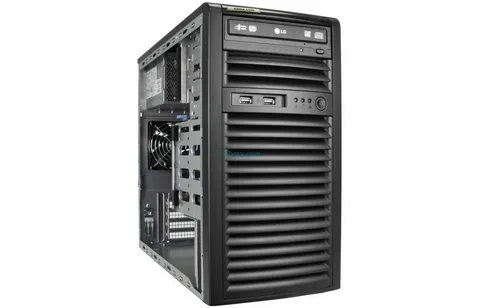Tower servers have emerged as indispensable components in the realm of information technology, offering a myriad of benefits and capabilities that cater to the evolving needs of businesses and enterprises worldwide. As the demand for robust computing infrastructure continues to soar, the significance of tower servers in enhancing operational efficiency and facilitating seamless data management cannot be overstated.
Introduction to Tower Servers
Tower servers represent a distinct category of servers characterized by their standalone design, resembling conventional desktop computers housed in vertical enclosures. Unlike rack servers or blade servers, which are typically mounted in data center racks, tower servers are self-contained units that can be conveniently placed on or under desks, making them ideal for small to medium-sized businesses, remote offices, and branch locations.
Evolution of Tower Servers
The evolution of tower servers traces back to the early days of computing when businesses relied on mainframe systems for their computational needs. Over the years, advancements in hardware architecture and manufacturing techniques have led to the development of compact yet powerful tower server models capable of handling a diverse range of workloads with unparalleled efficiency.
Features of Tower Servers
Tower servers boast a plethora of features designed to meet the demands of modern IT environments. From multi-core processors and high-speed memory modules to redundant power supplies and hot-swappable storage drives, these servers offer a comprehensive suite of hardware components tailored to deliver exceptional performance and reliability.
Benefits of Tower Servers
One of the primary advantages of tower servers lies in their cost-effectiveness and scalability. Unlike traditional mainframes or proprietary systems, tower servers are built using standard off-the-shelf components, making them more affordable to acquire and maintain. Additionally, their modular design allows for easy expansion and upgrades, enabling businesses to adapt to changing workload requirements without incurring significant overhead costs.
Comparing Tower Servers with Other Server Types
In contrast to rack servers, which are designed for high-density deployments, tower servers offer greater flexibility and expandability, making them suitable for a wide range of applications and environments. While blade servers excel in terms of space efficiency and power density, they may lack the versatility and customization options available with tower servers. Standalone servers, on the other hand, are often limited in terms of scalability and performance, making them less suitable for mission-critical tasks.
Applications of Tower Servers
Tower servers find widespread use across various industries and sectors, serving as the backbone of IT infrastructure for businesses of all sizes. From hosting web applications and databases to supporting virtualization and cloud computing initiatives, tower servers play a pivotal role in driving innovation and productivity in today's digital landscape.
Factors to Consider When Choosing Tower Servers
When selecting a tower server for your organization, it's essential to assess your specific requirements and objectives. Factors such as performance capabilities, scalability options, and budget constraints should be carefully considered to ensure optimal performance and return on investment.
Installation and Setup of Tower Servers
Deploying a tower server involves several key steps, including hardware installation, software configuration, and network integration. By following best practices and guidelines provided by the manufacturer, organizations can streamline the setup process and minimize downtime associated with system deployment.
Security Measures for Tower Servers
Protecting sensitive data and ensuring the integrity of your server infrastructure is paramount in today's cybersecurity landscape. Implementing robust security measures such as data encryption, access controls, and regular software updates can help safeguard your tower servers against potential threats and vulnerabilities.
Maintenance and Troubleshooting Tips
To maintain peak performance and reliability, it's essential to conduct regular maintenance and monitoring of your tower servers. By leveraging monitoring tools and diagnostic utilities, IT administrators can identify and address potential issues before they escalate into major disruptions, minimizing downtime and ensuring uninterrupted operation.
Future Trends in Tower Servers
Looking ahead, the future of tower servers is poised for innovation and advancement, with emerging technologies such as cloud computing, artificial intelligence, and edge computing driving new opportunities for growth and optimization. As organizations continue to embrace digital transformation initiatives, the demand for robust and scalable server infrastructure will only continue to grow.
Conclusion
In conclusion, tower servers represent a cornerstone of modern IT infrastructure, offering unparalleled performance, scalability, and reliability for businesses and enterprises worldwide. By harnessing the power of next-level performance, organizations can unlock new possibilities and drive innovation in an increasingly competitive landscape.


No comments yet